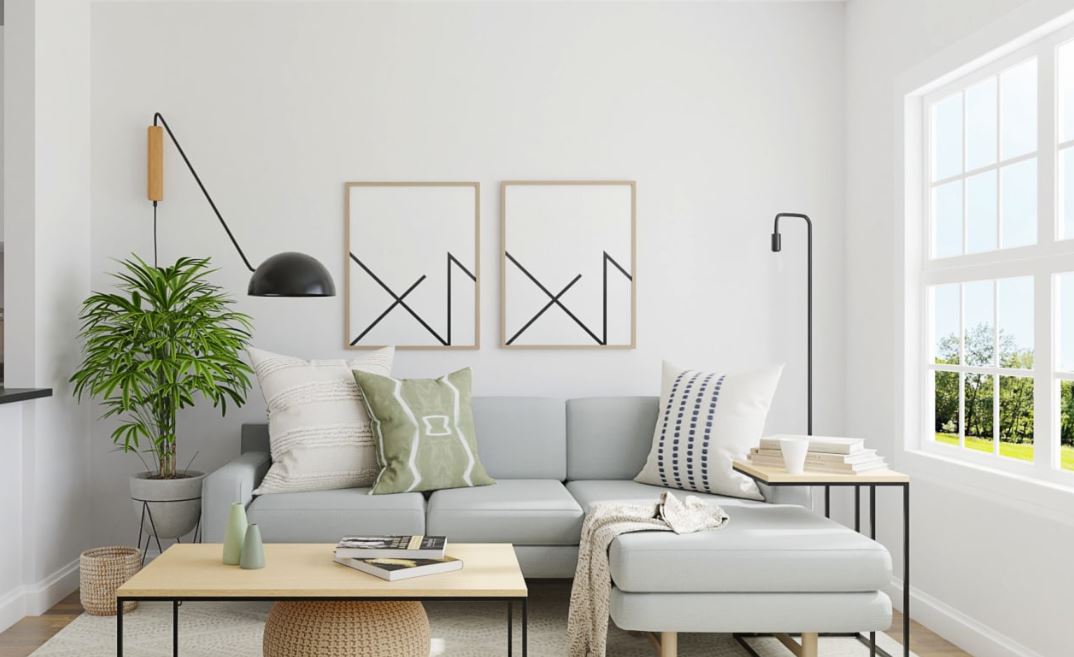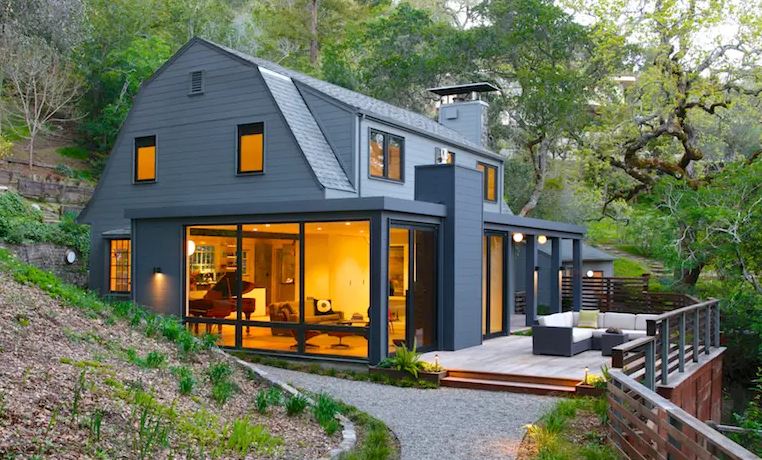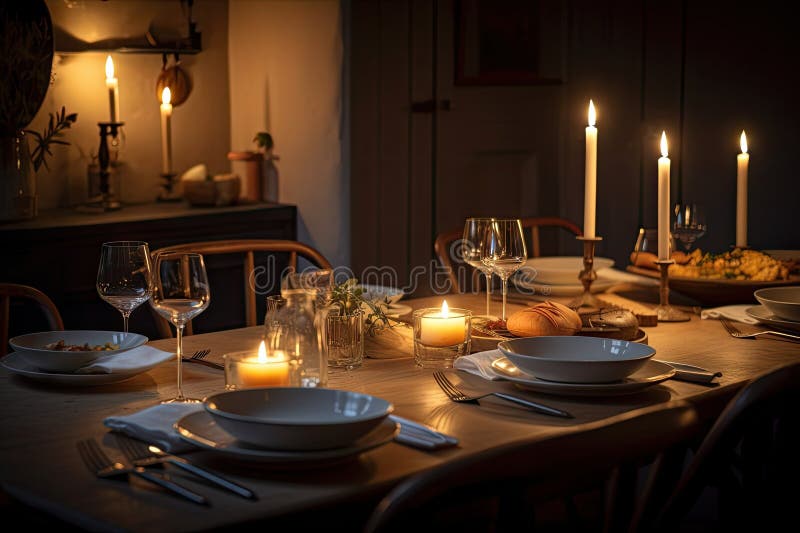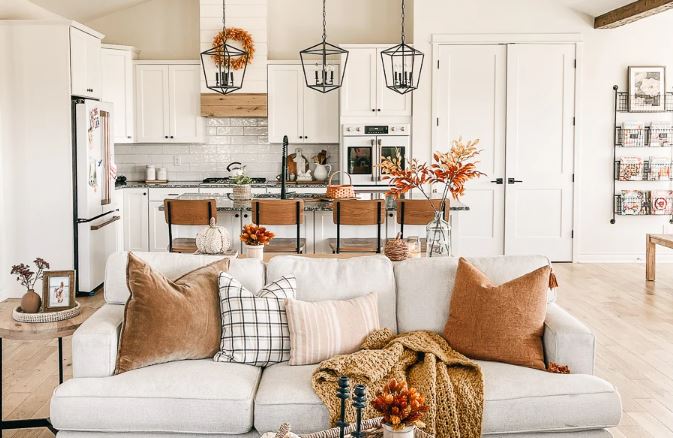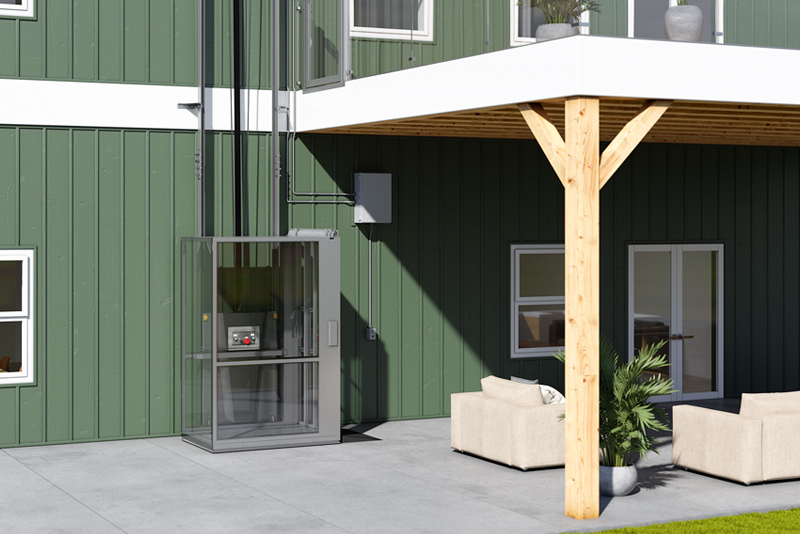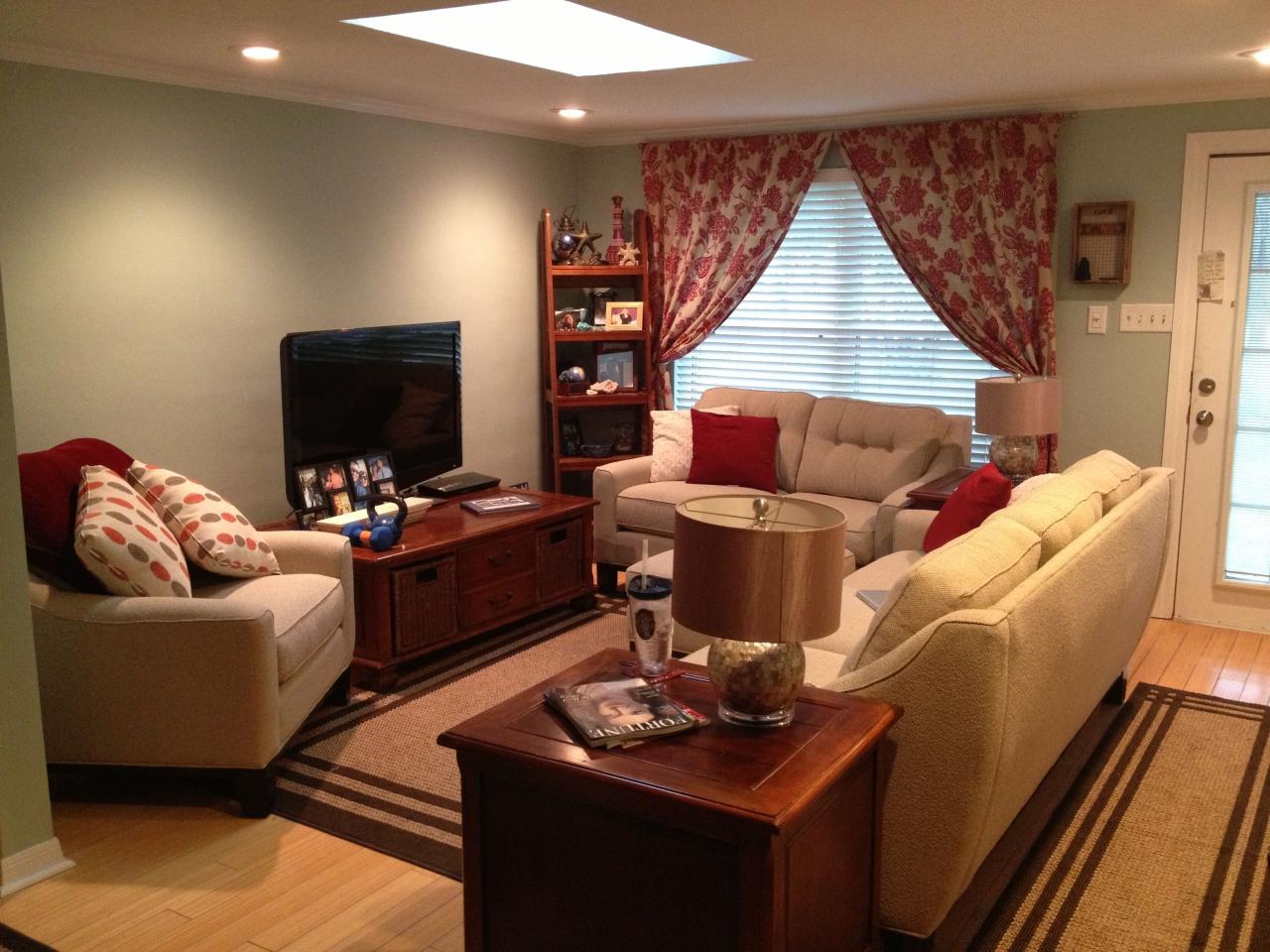Smart home interior design trends for 2024 and beyond are rapidly evolving, blending cutting-edge technology with sophisticated aesthetics. This exploration delves into the exciting intersection of intelligent systems and interior spaces, examining how AI-powered features, sustainable materials, and user-centric design are shaping the homes of tomorrow. We’ll investigate the integration of smart technologies across various design styles, from minimalist chic to maximalist opulence, while considering crucial aspects like user experience, data privacy, and the environmental impact of our choices.
The future of home design is intelligent, and this overview will guide you through its exciting possibilities.
This report will cover the integration of AI-powered lighting, voice-activated appliances, and smart security systems, alongside the rise of sustainable and eco-friendly design practices. We will analyze different design aesthetics and their compatibility with smart technology, focusing on user experience and accessibility. Furthermore, we will explore future trends, including the potential impact of augmented and virtual reality on home design, offering a glimpse into the smart homes of the future.
Finally, we’ll provide illustrative examples of smart kitchens, bathrooms, and living rooms, showcasing the seamless integration of technology and design.
Emerging Smart Home Technologies in Interior Design
The integration of smart technology is rapidly transforming interior design, moving beyond mere convenience to become a crucial element in creating aesthetically pleasing and functional living spaces. This evolution is driven by advancements in artificial intelligence, voice recognition, and enhanced security features, all working together to improve both the look and feel of the home.
AI-Powered Lighting Systems in Modern Home Designs
AI-powered lighting systems offer far more than simple on/off functionality. They utilize sophisticated algorithms to adjust brightness and color temperature throughout the day, mimicking natural sunlight and optimizing for various activities. For instance, a system could automatically dim lights in the evening for a relaxing atmosphere, or increase brightness in the kitchen during meal preparation. Furthermore, these systems learn user preferences over time, anticipating needs and creating personalized lighting scenarios.
Imagine a system that automatically adjusts the lighting to match the time of day, your mood, or even the weather outside, all without requiring any manual intervention. The aesthetic impact is significant, creating dynamic and adaptable lighting schemes that enhance the overall ambiance of a room. The integration is seamless, often involving sleek, minimalist fixtures that blend seamlessly into contemporary interior designs.
Functionalities and Aesthetic Impact of Voice-Activated Smart Appliances, Smart home interior design trends for 2024 and beyond
Voice-activated smart appliances represent a significant leap in user convenience and home automation. Beyond simple commands like turning lights on or off, these devices allow for complex interactions, such as adjusting oven temperatures, starting the washing machine, or setting reminders. The aesthetic impact varies depending on the brand and model, but many manufacturers prioritize sleek designs that complement modern interiors.
Consider a minimalist smart refrigerator seamlessly integrated into a custom kitchen design, or a voice-controlled coffee machine that adds a touch of futuristic elegance to a breakfast nook. The functionality extends beyond individual appliances; many systems allow for coordinated control, enabling users to manage multiple devices simultaneously using voice commands. This creates a more intuitive and efficient home environment.
Smart Home Security Systems and Their Integration with Interior Design
Smart home security systems are no longer bulky, unsightly additions to a home; they are now designed to integrate seamlessly into interior design schemes. These systems often incorporate discreet cameras, sensors, and smart locks that blend seamlessly into their surroundings. For example, a smart doorbell can be chosen to match the style of the front door, while interior cameras can be disguised as everyday objects.
The functionality extends beyond basic security, with features such as motion detection, facial recognition, and remote access via smartphone applications. This enhanced security provides peace of mind while maintaining a stylish and uncluttered aesthetic. The integration of security systems with interior design demonstrates a shift towards prioritizing both safety and aesthetics.
Comparison of Smart Thermostat Brands
Smart thermostats offer energy efficiency and convenience, learning user preferences to optimize heating and cooling schedules. The following table compares three popular brands:
| Feature | Nest Learning Thermostat | ecobee SmartThermostat | Honeywell Home T9 Smart Thermostat |
|---|---|---|---|
| Price Point | $$$ | $$$ | $$ |
| Learning Capabilities | Excellent; learns user preferences over time | Excellent; adapts to occupancy and weather | Good; learns basic preferences |
| Remote Access | Yes, via app | Yes, via app | Yes, via app |
| Smart Home Integration | Excellent; works with many platforms | Excellent; works with many platforms | Good; works with select platforms |
| Sensor Integration | Optional room sensors available | Included room sensors | Optional room sensors available |
($
- Low, $$
- Medium, $$$
- High)
Sustainable and Eco-Friendly Smart Home Design: Smart Home Interior Design Trends For 2024 And Beyond
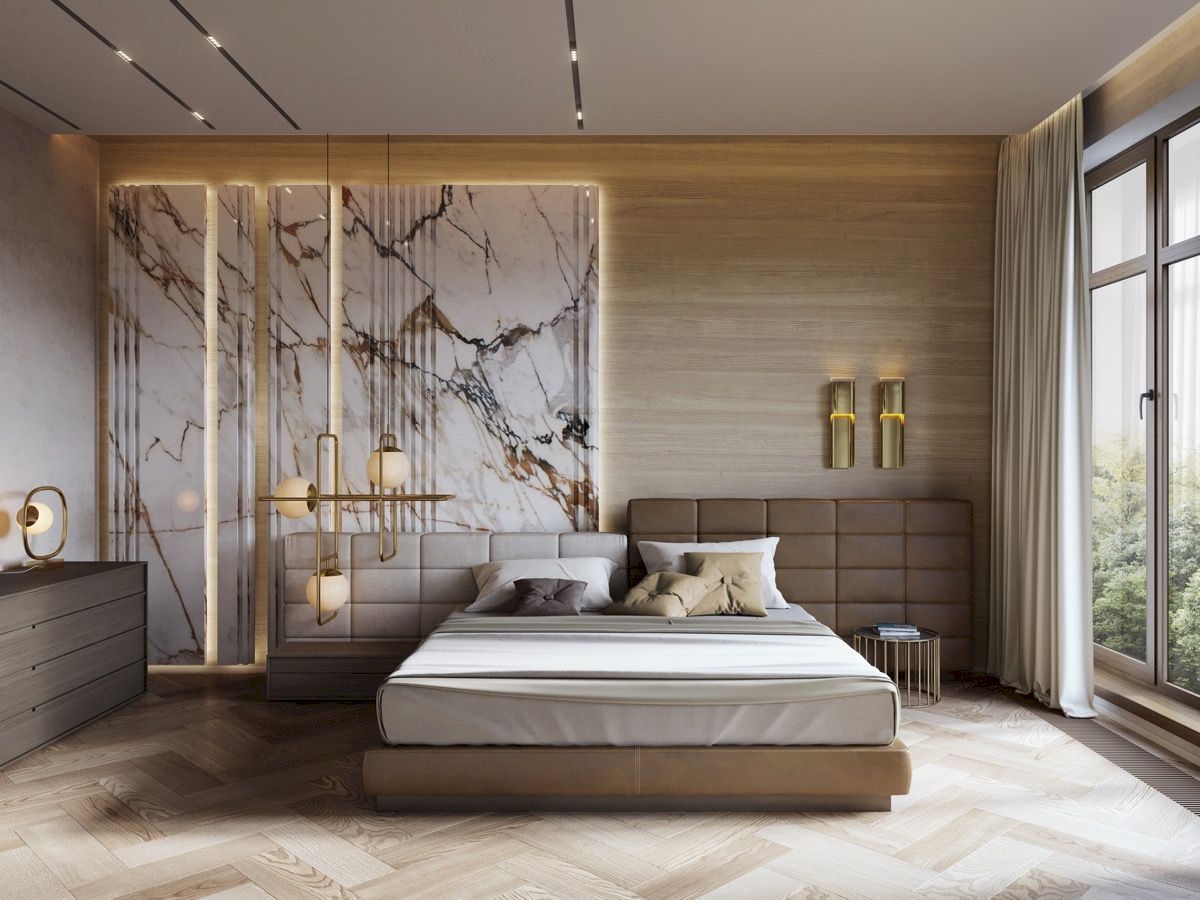
Source: pinimg.com
The integration of smart technology with sustainable practices is rapidly transforming the landscape of interior design. Homes are becoming increasingly intelligent, not just in terms of convenience, but also in their environmental impact. This shift towards eco-conscious smart homes reflects a growing awareness of the need for responsible living and a desire to minimize our carbon footprint. The future of interior design lies in the harmonious blend of technological innovation and environmental responsibility.Smart energy management systems are crucial for creating truly sustainable homes.
These systems go beyond simple energy monitoring; they actively optimize energy consumption based on real-time data and user preferences. For instance, a smart thermostat learns occupant behavior to adjust heating and cooling accordingly, minimizing energy waste. Smart lighting systems, utilizing energy-efficient LEDs and automated controls, further reduce electricity consumption. Integrated solar panels and battery storage systems can provide clean, renewable energy, reducing reliance on the grid and minimizing the overall environmental impact of the home.
These systems often offer detailed energy usage reports, empowering homeowners to make informed decisions and further reduce their consumption.
Eco-Friendly Smart Materials in Interior Design
The use of sustainable and eco-friendly materials is another key aspect of creating environmentally responsible smart homes. Bamboo, a rapidly renewable resource, is increasingly popular for flooring and furniture, offering both durability and aesthetic appeal. Recycled glass and reclaimed wood add character and reduce the demand for virgin materials. Cork, a natural and biodegradable material, provides excellent insulation and sound absorption.
Companies are also innovating with bio-based polymers and mycelium composites, offering sustainable alternatives to traditional plastics and wood. These materials often come with certifications that verify their environmental credentials, allowing consumers to make informed choices. For example, the use of reclaimed wood salvaged from old buildings adds a unique, rustic charm while reducing landfill waste and the carbon footprint associated with new lumber production.
The visual texture and story behind each piece make it a statement piece.
Maximizing Natural Light and Ventilation in Smart Homes
Strategic design plays a significant role in maximizing natural light and ventilation, reducing the need for artificial lighting and climate control. Large windows, strategically placed to capture optimal sunlight, can significantly reduce energy consumption. Smart window coverings, such as motorized blinds or shades, can be automated to optimize light and heat control throughout the day. Natural ventilation strategies, incorporating features like strategically placed windows and skylights, can create a comfortable indoor environment without relying on energy-intensive mechanical systems.
Cross-ventilation, where air flows through a building, can be enhanced through careful placement of openings. Smart sensors can monitor indoor air quality and automatically adjust ventilation systems accordingly. This approach not only reduces energy usage but also enhances occupant well-being by providing fresh air and ample natural light.
Benefits of Recycled or Reclaimed Materials in Smart Home Interiors
The benefits of incorporating recycled or reclaimed materials in smart home interiors are numerous and extend beyond environmental considerations.
- Reduced environmental impact: Using recycled materials significantly reduces the demand for new resources and minimizes waste sent to landfills.
- Unique character and aesthetic appeal: Reclaimed materials often possess unique characteristics and textures, adding character and a sense of history to the interior design.
- Cost savings: Recycled and reclaimed materials can often be more cost-effective than new materials.
- Durability and longevity: Many recycled and reclaimed materials are exceptionally durable and long-lasting.
- Support for sustainable practices: Choosing these materials supports businesses and initiatives committed to environmental responsibility.
Smart Home Aesthetics and Design Styles
The integration of smart technology into the home doesn’t necessitate a sacrifice of aesthetic appeal. In fact, smart home technology can enhance and complement various interior design styles, from the sleek minimalism of a modern apartment to the warm coziness of a traditional farmhouse. The key lies in thoughtful selection and seamless integration of devices, ensuring functionality doesn’t overshadow design.
Minimalist versus Maximalist Smart Home Design
Minimalist and maximalist approaches represent contrasting philosophies in interior design, yet both can effectively incorporate smart home technology. Minimalism prioritizes clean lines, uncluttered spaces, and a limited color palette. Smart devices in a minimalist setting should be discreet, perhaps integrated into walls or concealed within furniture. Think sleek, flush-mounted smart speakers or hidden smart lighting controls. Maximalism, on the other hand, embraces richness, texture, and a multitude of colors and patterns.
Smart devices can still be integrated, but their presence might be more overt, perhaps showcased as design elements themselves. For example, a statement smart lighting fixture could become a focal point in a maximalist room, adding both functionality and visual interest. The core difference lies in how the technology is presented – subtly integrated versus boldly displayed.
Three Interior Design Styles that Seamlessly Incorporate Smart Technology
Smart technology can seamlessly integrate into various design aesthetics. Three examples showcasing this harmony are Scandinavian, Mid-Century Modern, and Industrial styles. Scandinavian design, with its emphasis on natural light, functionality, and clean lines, pairs beautifully with smart lighting systems that adjust brightness and color temperature to mimic natural daylight. Mid-Century Modern, characterized by its iconic furniture and geometric shapes, benefits from smart home automation systems that streamline daily routines and add a layer of futuristic sophistication.
The industrial aesthetic, with its exposed brick and metal accents, can be enhanced by smart devices that add a touch of modern convenience without disrupting the raw, utilitarian feel. The choice of smart devices should reflect the overall style, maintaining a cohesive look.
Enhancing Design Aesthetics with Smart Home Technology
Smart home technology offers opportunities to enhance various design aesthetics. In a mid-century modern home, smart lighting systems can be used to highlight architectural details and create a warm, inviting atmosphere, reminiscent of the era’s focus on functionality and understated elegance. Similarly, in a Scandinavian space, smart thermostats and automated window coverings can optimize energy efficiency and create a comfortable, naturally lit environment, aligning perfectly with the style’s emphasis on sustainability and minimalism.
Smart devices should be carefully selected to complement, rather than clash with, the existing design elements, ensuring a harmonious blend of form and function.
Smart Home Device Compatibility with Interior Design Styles
| Smart Home Device | Minimalist | Scandinavian | Mid-Century Modern | Industrial |
|---|---|---|---|---|
| Smart Lighting (recessed) | Excellent | Excellent | Good | Good |
| Smart Speakers (compact) | Good | Good | Good | Good |
| Smart Thermostat (sleek design) | Excellent | Excellent | Good | Good |
| Smart Blinds (minimalist design) | Excellent | Excellent | Good | Fair |
| Smart Security System (discreet cameras) | Excellent | Good | Good | Good |
User Experience and Human-Centered Design in Smart Homes
The success of any smart home system hinges on its user experience. A poorly designed interface can lead to frustration and ultimately, abandonment of the technology. Conversely, an intuitive and user-friendly system seamlessly integrates into daily life, enhancing convenience and comfort. Human-centered design principles are crucial for ensuring that smart home technology empowers users rather than overwhelming them.Intuitive interfaces are paramount for a positive user experience.
They should be easy to navigate, understand, and control, regardless of the user’s technological proficiency. Simple, clear icons, straightforward menus, and voice control options are key elements. Consider, for example, a smart lighting system that allows users to adjust brightness and color temperature with a simple voice command or a tap on a user-friendly app. Such intuitive interactions minimize the learning curve and encourage regular use.
Intuitive Interfaces Enhance User Experience
Intuitive interfaces significantly reduce the cognitive load on users. Well-designed systems anticipate user needs and provide clear feedback, minimizing the need for extensive instruction manuals or troubleshooting. For instance, a smart thermostat that learns user preferences and automatically adjusts the temperature based on occupancy and time of day offers a seamless and personalized experience, requiring minimal user intervention.
This proactive approach to user interaction fosters a sense of ease and control. Consistent design language across all smart home devices and applications further enhances intuitiveness, enabling users to seamlessly switch between different systems without confusion.
User Privacy and Data Security in Smart Home Design
Protecting user privacy and data security is a critical ethical and practical consideration in smart home design. Users must have confidence that their personal information is safe and not being misused. This necessitates robust security protocols, including encryption of data both in transit and at rest, strong authentication mechanisms, and regular security updates. Transparency regarding data collection practices is also essential.
Users should be informed about what data is being collected, how it is being used, and have the option to opt out of data sharing. For example, a smart speaker that clearly indicates when it is recording and allows users to easily delete recorded conversations demonstrates a commitment to user privacy. This builds trust and encourages adoption of the technology.
Accessibility and Inclusivity in Smart Home Technology
Designing for accessibility and inclusivity ensures that smart home technology benefits everyone, regardless of their abilities or disabilities. This requires considering diverse needs and designing systems that are adaptable to individual requirements. For example, voice control systems can be particularly beneficial for users with mobility impairments, while visual cues and haptic feedback can enhance usability for visually or hearing-impaired individuals.
Adjustable font sizes and color contrast options in smart home applications are further examples of inclusive design. Moreover, designing for cognitive accessibility means creating systems that are easy to understand and use, regardless of age or cognitive ability.
Design Principles for a Seamless Smart Home Experience
Prioritizing user experience is crucial for the successful adoption and enjoyment of smart home technologies. The following principles ensure a seamless and user-friendly environment:
- Simplicity and Intuitiveness: Design interfaces that are easy to understand and use, regardless of technical expertise.
- Personalization and Customization: Allow users to tailor the system to their individual preferences and needs.
- Proactive Assistance: Anticipate user needs and provide relevant information or assistance proactively.
- Seamless Integration: Ensure that different smart home devices and applications work together seamlessly.
- Robust Security and Privacy: Implement strong security measures to protect user data and privacy.
- Accessibility and Inclusivity: Design systems that are usable by people of all abilities.
- Clear Feedback and Error Handling: Provide users with clear feedback on their actions and handle errors gracefully.
- Regular Updates and Maintenance: Provide regular software updates to improve performance and security.
The Future of Smart Home Interior Design
The next five years promise a significant evolution in smart home interior design, driven by technological advancements and a growing emphasis on personalized and sustainable living. We’re moving beyond simply connecting devices; the focus is shifting towards seamless integration, intuitive interfaces, and a deeper understanding of how technology can enhance our well-being and daily routines within our homes.
Three Major Trends in Smart Home Interior Design for the Next Five Years
The convergence of AI, IoT, and advanced materials will shape the future of smart home interiors. We can anticipate a rise in personalized and adaptable spaces, a greater emphasis on biophilic design integrated with smart technology, and a surge in proactive and predictive smart home systems.
The Impact of Emerging Technologies (e.g., AR/VR) on Home Design
Augmented and virtual reality technologies are poised to revolutionize the home design process. AR applications will allow homeowners to visualize furniture and décor in their spaces before purchasing, minimizing design errors and maximizing satisfaction. VR experiences will enable architects and designers to collaborate more effectively and create immersive virtual walkthroughs, enhancing the client experience and improving the overall design process.
For example, companies like IKEA already utilize AR apps to allow customers to virtually place furniture in their homes. This technology will only become more sophisticated, offering realistic simulations of lighting, textures, and even the soundscape of a proposed design.
Integration of Smart Home Technology into Future Living Spaces
The future of smart home integration will prioritize seamlessness and user experience. Imagine a home where lighting, temperature, and even the scent automatically adjust based on your daily schedule and preferences, all controlled through a single, intuitive interface. This interface might be voice-activated, gesture-controlled, or even responsive to biometrics, learning your routines and adapting accordingly. Data collected by smart sensors will be used not just for convenience but also for enhancing health and well-being.
For example, smart lighting systems could mimic natural daylight patterns to regulate circadian rhythms, while smart air quality monitors could automatically adjust ventilation to optimize indoor air quality.
A Futuristic Smart Home Interior
Imagine a spacious, open-plan living area bathed in natural light, enhanced by smart windows that automatically adjust tint and transparency based on the time of day and sunlight intensity. Walls are adorned with dynamic, interactive displays that showcase personalized artwork or ambient lighting schemes. Furniture is sleek and minimalist, incorporating embedded smart technology. A voice-activated assistant manages lighting, temperature, and entertainment, anticipating your needs and responding to subtle cues.
Biophilic design elements, such as a living wall incorporating air-purifying plants monitored by smart sensors, contribute to a healthy and refreshing atmosphere. The overall aesthetic is one of clean lines, natural materials, and subtle technological integration, creating a calming and functional living space that seamlessly blends technology with nature.
Illustrative Examples of Smart Home Interiors
Smart home technology is no longer a futuristic fantasy; it’s rapidly becoming an integral part of modern living. The integration of smart devices seamlessly blends functionality with aesthetics, creating homes that are not only technologically advanced but also beautiful and comfortable. Let’s explore some illustrative examples of smart home interiors, focusing on key areas: the kitchen, bathroom, and living room.
Smart Kitchen Design
A modern smart kitchen prioritizes efficiency and convenience. Imagine a space dominated by sleek, minimalist cabinetry in a warm, light gray hue, accented by brushed brass hardware. The countertops are a durable, matte-finish quartz in a creamy white, providing a sophisticated contrast. Integrated smart appliances are key: a smart refrigerator with an internal camera allows you to check its contents remotely, while a smart oven with precise temperature control and pre-programmed recipes simplifies cooking.
Smart induction cooktops offer instant heat adjustments and safety features, while a smart dishwasher automatically adjusts the wash cycle based on the load’s soil level. Recessed LED lighting provides adjustable brightness and color temperature, creating the perfect ambiance for any occasion. A smart pantry system helps manage inventory and reduce food waste. The overall aesthetic is clean, modern, and functional, with technology seamlessly integrated into the design.
Smart Bathroom Design
The smart bathroom prioritizes relaxation and wellness. Imagine a spa-like atmosphere created by calming, neutral tones – think soft greys and calming blues. Natural materials like marble or porcelain tiles are used for flooring and wall cladding, creating a sense of luxury. Smart lighting plays a crucial role: color-changing LED lights can be adjusted to mimic natural sunlight in the morning or create a soothing, dim light for evening baths.
Smart mirrors offer integrated displays for weather updates, news, and even video calls. A smart shower system allows precise temperature control and water flow adjustments, promoting energy efficiency. Underfloor heating provides consistent warmth, eliminating the need for radiators and enhancing the space’s minimalist design. A smart toilet with features like heated seats and automatic flushing completes the luxurious and technologically advanced experience.
Smart Living Room Design
The smart living room is the heart of the home, designed for entertainment and relaxation. Imagine a comfortable seating arrangement featuring a modular sofa in a soft, neutral fabric, complemented by plush armchairs and accent pillows in complementary textures. A large, high-definition smart TV takes center stage, seamlessly integrated into a minimalist media wall. Smart lighting enhances the mood, allowing for adjustments in brightness and color temperature based on the time of day or activity.
Smart speakers are discreetly integrated into the design, providing voice-activated control over lighting, temperature, and entertainment systems. A smart climate control system ensures optimal comfort, automatically adjusting the temperature based on occupancy and preferences. Smart window coverings offer automated control over natural light and privacy. The overall design emphasizes comfort and functionality, with technology unobtrusively enhancing the living experience.
The aesthetic is modern and sophisticated, balancing technology with comfort and style.
Final Review
As we’ve explored, the convergence of smart technology and interior design is creating homes that are not only aesthetically pleasing but also functional, sustainable, and user-centric. The future of home design promises a seamless blend of intelligent systems and personalized aesthetics, enhancing our lives through convenience, efficiency, and a deeper connection with our living spaces. The trends discussed, from AI-powered features to eco-conscious materials, highlight a dynamic shift towards a more intuitive and sustainable future of home living, promising a more comfortable and technologically advanced experience for homeowners worldwide.
Top FAQs
What are the potential drawbacks of smart home technology?
Potential drawbacks include the initial cost of implementation, potential privacy concerns related to data collection, reliance on internet connectivity, and the possibility of technical malfunctions.
How can I make my existing home smarter without a complete renovation?
Start with simple upgrades like smart lighting, smart speakers, and smart thermostats. Gradually integrate other devices as your budget and needs allow.
What are some affordable smart home options for budget-conscious homeowners?
Consider smart plugs, smart light bulbs, and entry-level smart speakers. These offer significant improvements at a lower cost compared to more complex systems.
How do I ensure the security of my smart home devices?
Use strong, unique passwords, enable two-factor authentication where available, keep software updated, and research the security features of devices before purchasing.
What is the best way to integrate smart home technology into a traditional design style?
Choose devices with discreet designs that complement your existing aesthetic. Consider hidden wiring and integration into existing furniture where possible.
- Cara Ganti Password Gmail Dan Membuat Kata Sandi Yang Tepat - December 21, 2025
- 50+ Filter Instagram yang Bagus Buat Selfie Cewek & Cowok, Lagi Hits - December 19, 2025
- Superkickoff Mod Apk ( Unlimited Money ) Download Terbaru 2026 - December 19, 2025


